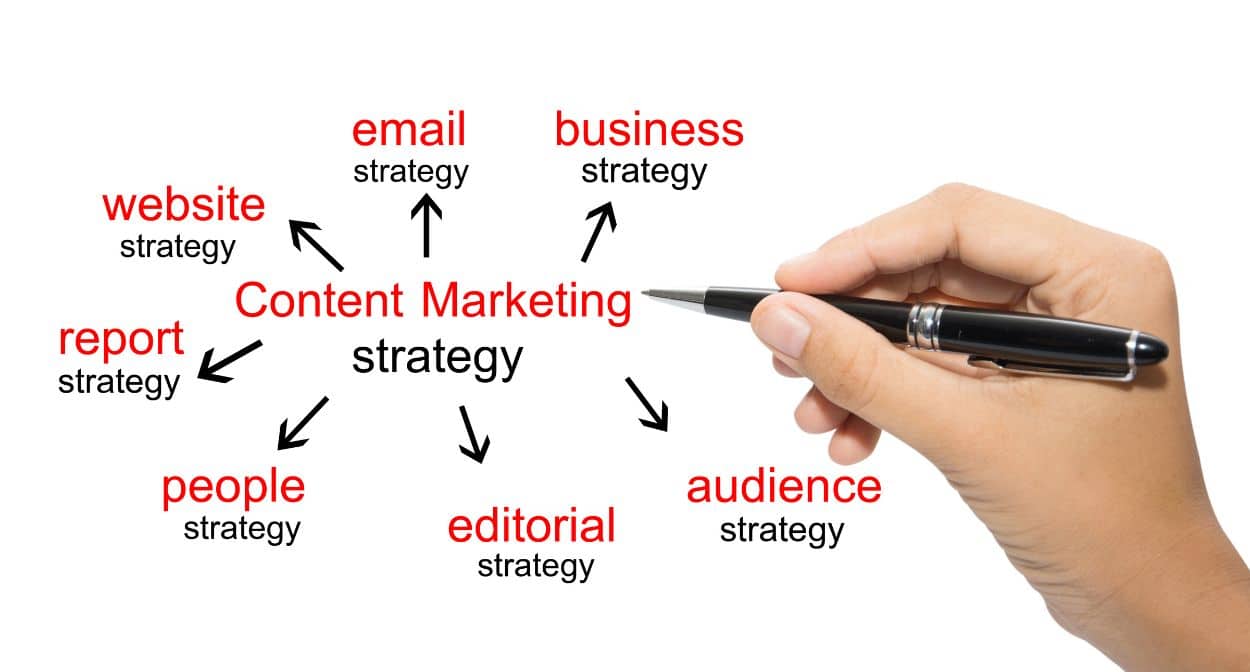Determining your business’s competitive opportunities in a market is much like assessing the chances a basketball team has of making it to the championships. In both scenarios, you need to gather relevant information, analyze your competition, and develop a winning strategy to stay ahead of the game.
Think of the basketball team as your business, and the other teams in the league as your competitors. Before the season starts, you study the strengths and weaknesses of each team, the individual players’ skill levels, and their strategies in previous games. This is similar to examining your competitors’ marketing strategies, product offerings, and overall business performance.
By gathering this information, you can make more informed decisions about your team’s training program, tactics, and game plan. Just as a basketball coach would identify areas where their team needs improvement and capitalize on their strengths, a business owner can use the insights gained from a competitive market analysis to adjust their marketing strategy and business operations to stand out in the market.
Furthermore, just as a basketball team needs to adapt to new tactics, injuries, and unexpected challenges throughout the season, a business must remain flexible and responsive to changes in the market. By staying up-to-date with industry trends and competitors’ activities, you can proactively adjust your strategies and maintain a competitive edge in the market.
Ultimately, both the basketball team and your business need a deep understanding of the competition and a well-crafted strategy to secure a spot in the championships and achieve long-term success.
The importance of competitive market analysis

Competitive market analysis plays a vital role in helping businesses make informed decisions and thrive in today’s fast-paced marketplace. By analyzing the competition, business owners can gain a deeper understanding of market trends, identify emerging opportunities, and capitalize on them to stay ahead of the curve.
Making informed business decisions
Performing a competitive market analysis enables you to evaluate your competitors’ strengths and weaknesses, thus helping you make informed decisions. This information can help you refine your business strategy, identify areas for improvement, and ultimately enhance your product or service offerings. Armed with this knowledge, you can position your business more effectively and make more strategic decisions that drive growth and success.
Identifying market trends and opportunities
Analyzing your competition provides valuable insight into prevailing market trends and uncovers untapped opportunities. By examining your competitors’ marketing strategies, product offerings, and pricing structures, you can identify gaps in the market that your business can exploit. This enables you to stay ahead of the game, differentiate yourself from the competition, and secure a larger market share.
Benefits of conducting a competitive market analysis

A thorough competitive market analysis offers numerous benefits that contribute to the long-term success of your business.
Uncovering strengths and weaknesses
By examining your competition, you can identify your own strengths and weaknesses, as well as those of your competitors. This information can be invaluable in shaping your marketing strategy and guiding your business decisions. Knowing your strengths allows you to capitalize on them, while understanding your weaknesses helps you take corrective action to address areas where you may be falling short.
Developing a unique competitive advantage
Conducting a competitive market analysis can also help you develop a unique competitive advantage. By understanding the strategies, products, and services offered by your competitors, you can determine how to differentiate your business and offer something unique to your target audience. This competitive advantage can be the key to attracting new customers and retaining existing ones, ultimately driving your business’s growth and success.
Define Your Market and Objectives

Identify your target audience
To perform an effective competitive market analysis, you need to know who you’re competing for. Identifying your target audience is a crucial step in this process, as it allows you to understand the specific needs and preferences of the customers you aim to serve.
Demographics
Start by examining the demographic factors of your target audience. These can include age, gender, income, education, occupation, and location. By understanding the demographics of your target customers, you can tailor your product offerings, pricing, and marketing messages to resonate with them effectively.
Psychographics
After identifying the demographics of your target audience, delve into their psychographics. Psychographics encompass the attitudes, interests, values, and lifestyles of your target customers. This information can help you create marketing strategies that appeal to their emotions and motivations, leading to a stronger connection with your audience.
Set clear objectives for your analysis

With a defined target audience, it’s essential to set clear objectives for your competitive market analysis. This will help you stay focused on specific areas of improvement and create a roadmap for your business growth.
Improve product/service offerings
One objective of your analysis might be to identify opportunities to enhance your product or service offerings. By understanding your competition’s strengths and weaknesses, you can find gaps in the market and develop new or improved products and services that cater to your customers’ needs.
Refine marketing strategies
Another objective could be to refine your marketing strategies based on the competition. By examining the marketing efforts of your competitors, you can gain insights into what works and what doesn’t in your industry. This will enable you to adapt your marketing strategies and tactics to better engage your target audience and gain a competitive edge.
Now that you’ve defined your market and set clear objectives for your competitive market analysis, the next step is to identify and analyze your key competitors. In the following section, we’ll discuss how to choose the right competitors to study and the various aspects to consider when evaluating their performance.
Identify Your Competitors

With a solid understanding of your market and objectives, it’s time to identify the key competitors you’ll analyze. This is crucial, as knowing who you’re up against will help you better understand the competitive landscape and identify opportunities for your business.
Direct competitors (same products/services)
Direct competitors are businesses that offer the same products or services as your company. These competitors pose the most significant threat, as they target the same customers and compete for the same market share.
Local and regional competitors
Start by identifying local and regional competitors operating within your geographic area. These businesses are likely to be your most immediate rivals and may have a better understanding of your specific market conditions.
National and global competitors
Next, consider national and global competitors that operate beyond your immediate region. While they may not be as close in proximity, their size and resources could still pose a threat to your business, especially if they decide to expand into your territory.
Indirect competitors (alternative solutions)

Indirect competitors offer alternative solutions to your products or services. They may not be as apparent as direct competitors but can still impact your business by providing customers with alternative options to meet their need
Substitutes and complementary products/services
Identify substitutes and complementary products or services that your customers may consider instead of your offerings. For example, a customer might choose a different mode of transportation instead of buying a car or opt for a home-cooked meal rather than dining out.
Emerging trends and technologies
Pay attention to emerging trends and technologies that may disrupt your industry or create new opportunities. By staying aware of these developments, you can adapt your business strategy and stay ahead of the competition.
Identify their market share and positioning

Once you’ve identified your direct and indirect competitors, it’s important to understand their market share and positioning within your industry.
Market leader, challenger, or follower
Determine whether each competitor is a market leader, challenger, or follower. Market leaders typically have the largest market share and are often seen as innovators. Challengers may have a smaller market share but are striving to overtake the market leader, while followers tend to mimic successful strategies implemented by the leaders and challengers.
Niche or mass market focus
Identify whether your competitors focus on a niche market or cater to the mass market. Understanding their target audience will help you determine the best way to position your business and identify opportunities for growth.
Now that you’ve identified your competitors, it’s time to dive into the analysis. In the next section, we’ll explore the various aspects to consider when evaluating your competitors and the tools and resources available to help you gather the necessary information.
Analyze Your Competitors’ Offerings

Having identified your competitors, it’s time to analyze their offerings to understand their strengths, weaknesses, and opportunities for your business. By doing so, you can develop a strategy that sets your company apart and positions you for success in the market.
Products and services
Start by examining your competitors’ products and services to identify any similarities or differences compared to your offerings.
Features and benefits
Compare the features and benefits of each competitor’s products or services. Take note of any unique selling points that set them apart from the competition.
Quality and performance
Evaluate the quality and performance of your competitors’ offerings. Look for customer reviews, testimonials, or third-party assessments to gauge their reputation in the market.
Unique selling propositions (USPs)

USPs are the key factors that differentiate a business from its competitors. Understanding your competitors’ USPs will help you identify opportunities to set your business apart.
Value proposition
Determine the value proposition of each competitor’s offerings. This includes the benefits they provide, the problems they solve, and the reasons customers choose them over other options.
Branding and positioning
Examine your competitors’ branding and positioning in the market. How do they present themselves to customers, and what messages do they communicate?
Pricing strategies

Pricing is a crucial element of any business strategy. Analyzing your competitors’ pricing strategies will help you determine how to price your products or services effectively.
Cost-based, value-based, or competitive pricing
Identify whether your competitors use cost-based, value-based, or competitive pricing strategies. Cost-based pricing is determined by the cost of production, value-based pricing is based on the perceived value of the product, and competitive pricing is set in relation to competitors’ prices.
Discounts and promotions
Take note of any discounts, promotions, or special offers your competitors provide. This can give you insight into their marketing strategies and help you develop your own promotional efforts.
Distribution channels

Analyzing your competitors’ distribution channels can help you identify new opportunities for reaching your target audience.
Direct and indirect channels
Determine whether your competitors use direct channels, such as selling directly to customers, or indirect channels, such as working with distributors or retailers.
E-commerce and brick-and-mortar presence
Examine your competitors’ e-commerce and brick-and-mortar presence. Do they have a strong online presence, physical locations, or both? Understanding their distribution strategies can help you decide how to best reach your customers.
With a thorough analysis of your competitors’ offerings in hand, you’re now ready to move on to the next step: finding the strengths and weaknesses in your competitors’ online presence.
Assess Competitors’ Online Presence

Now that you have a better understanding of your competitors’ offerings and strategies, it’s time to assess their online presence. This will help you identify their digital strengths and weaknesses, providing valuable insights for your own online marketing efforts.
Website design and user experience
Begin by evaluating your competitors’ website design and user experience to understand how they attract and retain customers online.
Navigation and layout
Examine the navigation and layout of their websites. Are they easy to use, well-organized, and visually appealing? Take note of any features or design elements that stand out.
Mobile optimization
Evaluate how well their websites perform on mobile devices. Are they responsive and optimized for various screen sizes? Mobile optimization is crucial in today’s digital landscape, and a poor mobile experience can deter potential customers.
Content marketing strategy

Content marketing plays a vital role in attracting and engaging online audiences. Assess your competitors’ content marketing strategies to identify opportunities for your own content efforts.
Blogging and resource materials
Check if your competitors have blogs or resource sections on their websites. What topics do they cover, and how frequently do they post? This can give you an idea of their content strategy and areas where you can create unique, valuable content.
Lead magnets and gated content
Examine whether your competitors use lead magnets or gated content to capture leads. These can include e-books, whitepapers, webinars, or exclusive content accessible only to subscribers.
Social media presence

Social media can be a powerful tool for engaging with customers and building brand awareness. Analyze your competitors’ social media presence to identify areas where you can outperform them.
Platform selection and activity
Determine which social media platforms your competitors use and how active they are on each. Are they focusing on specific platforms, or do they have a presence across multiple channels?
Engagement and community building
Assess how well your competitors engage with their audience on social media. Are they responsive to comments, sharing user-generated content, or fostering a sense of community among followers?
Search engine optimization (SEO) and paid advertising efforts

Finally, examine your competitors’ SEO and paid advertising efforts to understand how they drive traffic to their websites.
Organic search rankings
Analyze your competitors’ organic search rankings for relevant keywords. This can give you insight into their SEO strategies and help you identify opportunities to improve your own search rankings.
Pay-per-click (PPC) campaigns
Investigate whether your competitors are running PPC campaigns, such as Google Ads or social media advertising. These campaigns can provide valuable information about the keywords they’re targeting and the types of ads they’re using.
With a comprehensive assessment of your competitors’ online presence, you can now use these insights to refine your digital marketing strategy and create a plan to outperform them in the online space. In the next section, we’ll discuss how to evaluate your competitors’ overall marketing strategies.
Evaluate Competitors’ Marketing Strategies

Armed with insights from the previous section, you’re now in a great position to evaluate your competitors’ marketing strategies. By analyzing their promotional efforts, partnerships, customer feedback, and public relations tactics, you’ll be able to identify areas where your business can shine.
Promotional campaigns and techniques
Examine your competitors’ promotional campaigns and techniques to understand how they attract attention and drive customer interest.
Advertising and media placements
Identify the types of advertising and media placements your competitors use, such as print, radio, television, or online. This will give you an idea of their promotional tactics and help you discover new advertising opportunities.
Events and experiential marketing
Analyze your competitors’ involvement in events and experiential marketing, such as trade shows, workshops, or product demonstrations. These initiatives can offer valuable insights into their audience engagement strategies.
Partnerships and collaborations

Partnerships and collaborations can be powerful ways for businesses to expand their reach and increase brand awareness.
Joint ventures and co-branding
Investigate whether your competitors engage in joint ventures or co-branding efforts with other companies. These partnerships can reveal their strategic alliances and potential opportunities for your own collaborations.
Sponsorships and endorsements
Look into your competitors’ sponsorships and endorsements, such as supporting local events, partnering with influencers, or collaborating with other organizations. This can help you identify potential sponsorship opportunities that align with your brand values.
Customer reviews and testimonials

Customer feedback can provide valuable insights into your competitors’ strengths and weaknesses.
Online review platforms
Examine your competitors’ customer reviews on platforms like Google, Yelp, or social media. What are their customers saying about their products and services? This information can help you identify areas for improvement in your own business.
Case studies and success stories
Review your competitors’ case studies and success stories, if available. These can offer insights into their most successful projects and demonstrate the impact of their offerings.
Public relations and media coverage

Public relations efforts and media coverage can boost brand visibility and credibility.
Press releases and news articles
Investigate your competitors’ press releases and news articles. This can provide insights into their public relations strategies and noteworthy achievements.
Industry awards and recognition
Research any industry awards and recognition your competitors have received. This information can help you understand their reputation within the industry and identify potential award opportunities for your own business.
By evaluating your competitors’ marketing strategies, you can uncover hidden opportunities and areas where your business can excel. Next, we’ll analyze the strengths and weaknesses of the competition.
Analyze Competitors’ Strengths and Weaknesses

Having evaluated your competitors’ marketing strategies, it’s time to dive deeper into their strengths and weaknesses. By identifying their competitive advantages, pinpointing areas for improvement, and determining potential opportunities and threats, you can develop a comprehensive understanding of your market and create a strategic plan to outperform your competition.
Identify their competitive advantages
Discovering your competitors’ competitive advantages can help you understand what sets them apart in the market and how your business can differentiate itself.
Intellectual property and trade secrets
Examine your competitors’ intellectual property, such as patents, trademarks, or copyrights, as well as any trade secrets they may have. This knowledge can provide insights into their unique capabilities and potential barriers to entry in the market.
Economies of scale and cost advantages
Investigate whether your competitors benefit from economies of scale or cost advantages. This information can help you identify potential pricing strategies and areas where your business can improve its cost structure.
Pinpoint areas for improvement

Identifying your competitors’ weaknesses can reveal opportunities for your business to excel and outperform them.
Customer service and support
Assess your competitors’ customer service and support offerings, such as response times, communication channels, or support resources. Identifying gaps in their customer service can provide opportunities for your business to differentiate itself and win over customers.
Operational efficiency
Analyze your competitors’ operational efficiency, such as their production processes, supply chain management, or inventory control. Identifying inefficiencies can help you develop strategies to streamline your own operations and gain a competitive edge.
Determine potential opportunities and threats

By understanding the potential opportunities and threats in your market, you can better prepare your business to adapt and thrive.
Market trends and shifts
Keep an eye on market trends and shifts that could impact your industry. Understanding these trends can help you anticipate changes and adapt your strategies accordingly to stay ahead of your competitors.
Technological advancements
Monitor technological advancements that could influence your industry or change the competitive landscape. Embracing new technology and innovation can help you gain a competitive advantage and future-proof your business.
Now you should have a thorough understanding of your competitors’ strengths and weaknesses. Let’s move on to how we can use this information to gain an advantage.
Learn from Your Competitors

Having analyzed your competitors’ strengths and weaknesses, it’s time to use these insights to inform your own strategies. Learning from your competitors means adopting best practices, avoiding pitfalls, and staying updated on their activities, which will enable you to make better-informed decisions for your business.
Best practices to adopt
Identifying and adopting the best practices of your competitors can help you improve your own business performance.
Marketing techniques and tactics
Take note of your competitors’ successful marketing techniques and tactics, such as innovative ad campaigns, social media strategies, or content marketing efforts. Incorporate the most effective elements into your own marketing plan to boost your brand visibility and customer engagement.
Product/service enhancements
Analyze your competitors’ product or service offerings to identify enhancements that resonate with customers. Consider integrating similar improvements into your own products or services to better meet customer needs and expectations.
Pitfalls to avoid

Learning from your competitors’ mistakes and failures can help you avoid making similar missteps.
Mistakes and failures
Study your competitors’ past mistakes or failures, such as unsuccessful product launches, poor marketing campaigns, or financial issues. Use these insights to inform your own strategies and decision-making processes, reducing the risk of similar errors.
Negative customer feedback
Examine negative customer feedback or reviews about your competitors to identify areas where they fall short. Addressing these issues in your own business can help you gain a competitive edge by offering a superior customer experience.
Stay updated on competitors’ activities

Regularly monitoring your competitors’ activities will help you stay informed and prepared to respond to changes in the market.
Monitor their online presence
Keep an eye on your competitors’ websites, social media profiles, and content marketing efforts to stay informed about their latest offerings, promotions, and announcements. This information can help you anticipate their strategies and respond accordingly.
Subscribe to industry news and updates
Stay up-to-date with industry news, trends, and updates to ensure you’re aware of any developments that could impact your business or its competitive landscape. By staying informed, you’ll be better equipped to make strategic decisions and capitalize on new opportunities as they arise.
By learning from your competitors and using these insights to refine your strategies, you’ll be well-equipped to succeed in today’s competitive business environment.
Develop Your Competitive Strategy

With a comprehensive understanding of the competitive landscape, you’re now in a strong position to develop your competitive strategy. This strategy will help you capitalize on your strengths, address your weaknesses, exploit your competitors’ weaknesses, and respond to market opportunities, ensuring your business thrives in a competitive environment.
Leverage your strengths
To stand out in the market, focus on the unique qualities that set your business apart.
Unique product/service features
Highlight the unique features of your products or services that differentiate you from your competitors. Emphasize these qualities in your marketing materials to attract customers who value those specific features.
Exceptional customer service
Providing exceptional customer service can be a significant competitive advantage. Train your team to deliver outstanding service, and promote your commitment to customer satisfaction in your marketing efforts.
Address your weaknesses

Identifying and addressing your weaknesses is crucial for continuous improvement and business success.
Operational improvements
Assess your operational processes to identify areas of inefficiency or underperformance. Implement changes to streamline operations, reduce costs, and improve overall performance.
Training and development programs
Invest in training and development programs for your team to strengthen their skills and address any skill gaps. This will help you build a more capable and competitive workforce.
Exploit competitors’ weaknesses

Understanding your competitors’ weaknesses can provide you with opportunities to outshine them in the market.
Differentiate your offerings
Identify areas where your competitors are underperforming or failing to meet customer needs. Focus on differentiating your offerings in these areas to create a unique value proposition and attract customers who are dissatisfied with your competitors’ products or services.
Develop innovative marketing tactics
Design marketing campaigns that capitalize on your competitors’ weaknesses. By highlighting the advantages of your products or services over those of your competitors, you can persuade potential customers to choose your business instead.
Respond to market opportunities

Stay agile and adaptive to make the most of emerging trends and opportunities.
Adapt to emerging trends
Keep a close eye on market trends and be ready to adapt your business strategies accordingly. By staying ahead of the curve, you can seize opportunities before your competitors do and establish a strong market presence.
Develop new products/services
Regularly assess market needs and consider developing new products or services that address unmet customer demands. By expanding and diversifying your offerings, you can tap into new revenue streams and increase your business’s resilience.
In summary, crafting a competitive strategy involves leveraging your strengths, addressing your weaknesses, exploiting your competitors’ weaknesses, and responding to market opportunities. By following these steps and continuously refining your strategy, you’ll be well-positioned to succeed in the competitive business landscape.
Monitor and Adjust Your Strategy

Track your performance and progress
As you begin implementing your competitive strategy, it’s essential to continuously monitor and adjust it based on the ever-evolving market landscape. This section will guide you through the process of tracking your performance, analyzing customer feedback, staying informed about industry changes, and updating your competitive analysis regularly.
Key performance indicators (KPIs)
To measure the success of your strategy, establish key performance indicators (KPIs) that align with your objectives. These may include metrics like website traffic, lead generation, conversion rates, and customer acquisition costs. Regularly tracking and evaluating these KPIs will help you gauge the effectiveness of your efforts and identify areas for improvement.
Sales, market share, and customer retention
Pay close attention to your sales figures, market share, and customer retention rates. Monitoring these metrics will enable you to assess your competitive position in the market and determine whether your strategy is yielding the desired results.
Analyze feedback from customers

Online reviews and surveys
Customer feedback is a valuable resource for identifying potential weaknesses and opportunities for growth. Collect and analyze online reviews and survey responses to gain insights into your customers’ experiences and perceptions of your products or services.
Social media and email responses
Monitor your social media channels and email interactions for direct feedback from your customers. Their comments, questions, and concerns can provide valuable insights into areas where you can improve or innovate.
Stay informed about industry changes

Market research and reports
Regularly review market research reports, industry news, and expert analyses to stay updated on the latest trends, emerging technologies, and potential threats in your industry.
Industry events and conferences
Attend industry events and conferences to network with peers, learn from experts, and discover new tools and techniques that can help you stay ahead of your competition.
Continuously update your competitive analysis

Regular market assessments
Conduct frequent market assessments to ensure that your competitive analysis remains up-to-date and accurate. This will enable you to make informed decisions and adapt your strategy as needed.
Adjust your strategy as needed
As you monitor your progress and gather new information, be prepared to adjust your strategy accordingly. Continually refining your approach will help you stay ahead of your competitors and maintain a strong position in your market.
The impact of competitive analysis on business success

As we reach the end of our comprehensive guide on performing a competitive market analysis, let’s recap the key takeaways and emphasize the importance of ongoing competitive analysis in today’s dynamic business environment.
Informed decision-making
A thorough competitive market analysis provides you with valuable insights that can inform your decision-making processes. By understanding the strengths, weaknesses, opportunities, and threats present in your market, you can make more informed decisions regarding product development, marketing initiatives, and overall business strategy.
Sustained growth and profitability
By leveraging the insights gained from competitive analysis, you can develop targeted strategies that help you capture market share, improve customer satisfaction, and ultimately achieve sustained growth and profitability. As a result, a well-executed competitive analysis can serve as a cornerstone for your business’s long-term success.
In conclusion, competitive market analysis is an essential tool for navigating today’s dynamic business environment. By continuously monitoring your competition and adapting your strategies accordingly, you can maintain a competitive edge, make informed decisions, and drive your business towards sustained growth and profitability. Embrace the process of competitive analysis and watch your business thrive in the face of market challenges and opportunities.


